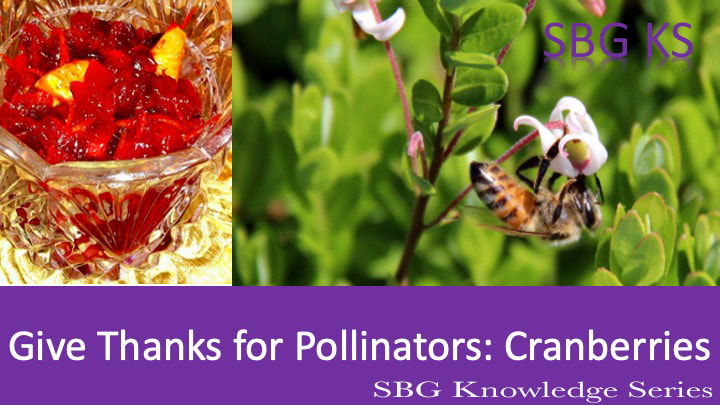
What would Thanksgiving dinner be without cranberry sauce?
Without pollinators, we’d soon find out! Because the reproductive organs in a cranberry flower mature at different times, the flowers can’t self-pollinate. That’s where bees come in—they are the main pollinators of cranberries and are critical to fruit production.
Bumble bees: Efficiency Experts. Bumble bees are super-efficient foragers of cranberry flowers. They work longer hours, being active earlier in the day and in inclement weather. They also possess a ‘bee superpower’-- their ability to buzz pollinate. A bumble will hang onto a flower while rapidly vibrating her flight muscles, causing pollen to be shaken loose onto her body. She’ll groom the pollen grains onto her hind legs, where they will accumulate into a large ball. In this way, a bumble be can cross-pollinate up to six times more flowers than a honey bee.
Mining bees, leafcutter bees and sweat bees are other native bees that are present in cranberry bogs. All are important for a good harvest.
Let’s bee thankful!
Photo credit of bee: Photo courtesy of Johnston’s Cranberry Marsh & Muskoka Lakes Winery, Ontario, Canada.
Photo credit of cranberry sauce: Faith M. Lucchesi
Author
Lisa Schneider

 RSS Feed
RSS Feed